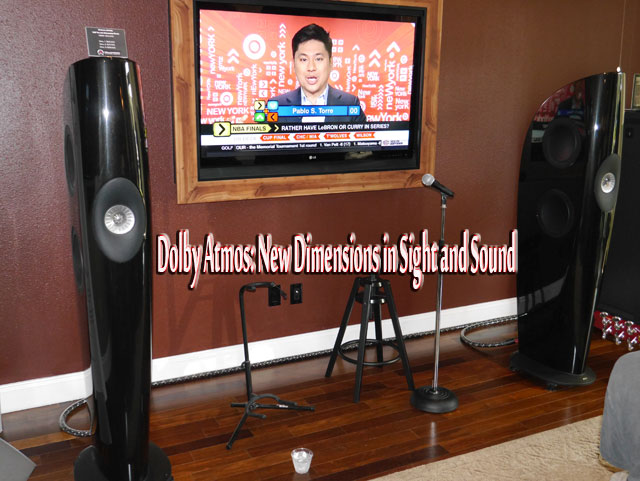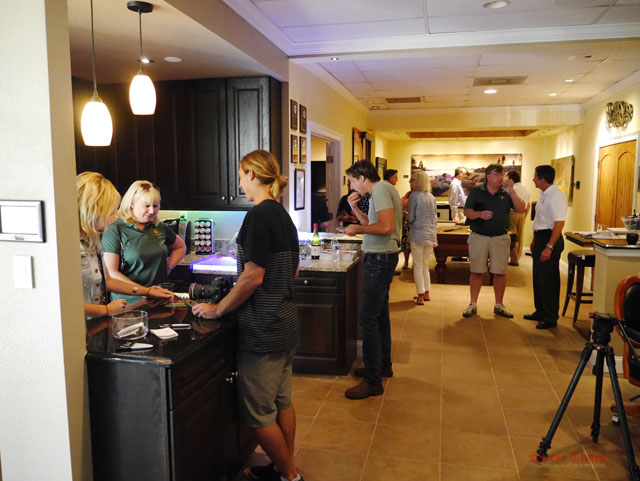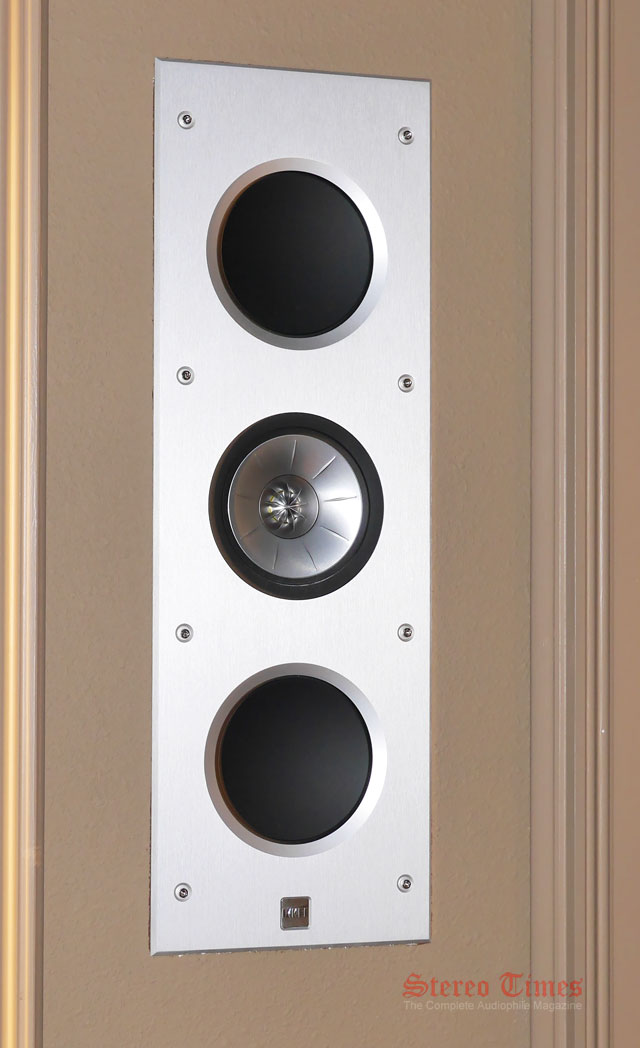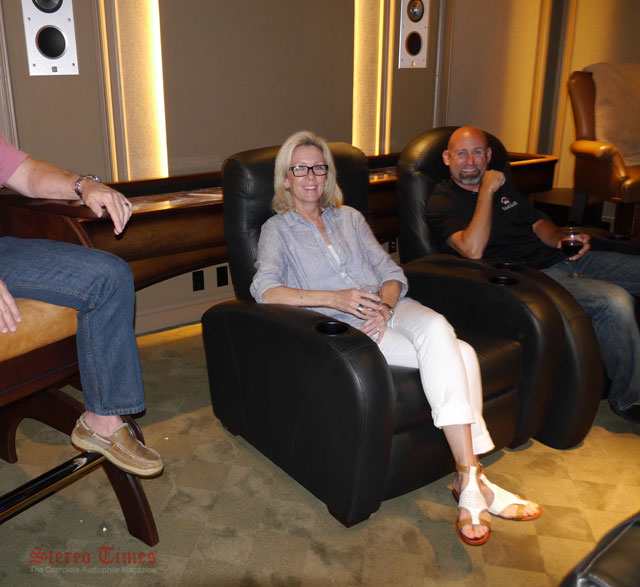Dolby Atmos: New Dimensions in Sight and Sound


 While working out the details of my upcoming review of the KEF R300 stand-mount loudspeaker, the good folks at KEF (US) alerted me to an event that is the subject of this preview: the June 4, 2015 Orlando unveiling of an incredible Dolby Atmos THX-based surround sound/home theater system in genuine high end implementation. The local Atmos exhibit came courtesy of a wonderful open house event put together by the dedicated team of audio/visual professionals at Millennium Systems Design, Inc. Supporting staff from KEF, Parasound, and Dolby were also in attendance.
While working out the details of my upcoming review of the KEF R300 stand-mount loudspeaker, the good folks at KEF (US) alerted me to an event that is the subject of this preview: the June 4, 2015 Orlando unveiling of an incredible Dolby Atmos THX-based surround sound/home theater system in genuine high end implementation. The local Atmos exhibit came courtesy of a wonderful open house event put together by the dedicated team of audio/visual professionals at Millennium Systems Design, Inc. Supporting staff from KEF, Parasound, and Dolby were also in attendance.
Home theater, you may ask? As was often the case when John Carpenter’s campy anti-hero Snake Plissken encountered a disbelieving adversary, I frankly thought (as some of you no doubt did) that home theater was dead, or pretty much dead. Turns out I was dead wrong. Yes, the collapse of the U.S. housing sector in the wake of the Great Recession of 2008 meant that homeowners who had grown accustomed to borrowing liberally against the equity in their houses to make needed home repairs and pricey upgrades (wine cellars, home gyms, and home theaters), no longer had easy access to cash. No quick cash meant no pricey basement-to-home theater conversions.
But, as the economy has rebounded (at least for some ), so too has the once near-dead home theater market. In fact, in some parts of the country (like central Florida), HT system sales have come roaring back. The sales team at MSD confirmed my suspicion that the bulk of their business involves residential HT instillations, not two channel stereo sales. Some of these installations can top $150,000. I think it’s safe to say that the Great Recession didn’t so much kill the HT market as put it into a protracted deep freeze.
If my brief (and delightful) visit to MSD central is any indication, the release of the Dolby Atmos system (in 2014) indicates that the post-recession HT thaw has blossomed into a full-scale resurgence. The Atmos system represents digital processing giant Dolby’s latest thinking on state-of-the-art surround sound encoding and processing. Unlike traditional HT/surround sound encryption systems that can only process sound in the horizontal plane – that is, left to right and ahead and behind – Atmos adds vertical sound encoding into the mix. The resultant 3d sound-field literally envelopes the listener in the recorded event. The Atmos system allows movie directors and sound engineers to “map” the precise position of individual sound sources and sound clusters in three-dimensional space rather than “allocating channels” for specific sounds or clusters of sounds. So when Iron Man, or the starship Enterprise soars overhead, or a towering skyscraper collapses to the ground, one not only sees the event on screen, one feels and most importantly, hears that same event to genuine 3d effect. This means not just more palpable left/right and ahead/behind immersion, but also an almost eerie sense of near-total overhead/underfoot immersion as well.
Importantly, I do not consider Atmos to be a one-trick pony, that is, a technology good for movies and bombastic soundtracks but of negligible value to music lovers. If properly implemented, Atmos offers the genuine promise of heightening the sense of immersive realism that today’s best multi-channel/hi-def music recordings can offer as well. Remember, in the concert hall, sound emanates not just from the performers and related direct sources but from a myriad of reflected sources as well. The better a system is at capturing both the direct and reflected sounds embedded in the best recordings, the better that system will be, all other factors being equal, at recreating a convincing 3d simulation of the real thing.



My limited time with the MSD system (which featured a full-range/7.3 channel KEF Reference HT speaker set-up, Parasound’s A 21 and A 51 multi-channel power amps, a Yamaha RX-A3040 processor/receiver, a Lumis 3D SIM-2 projector and Vutec screen, an unspecified Sony BluRay player and unspecified interconnect and speaker cabling, with the Dolby Atmos system performing the sound encoding duties) suggests that Atmos is no flash in the pan. During the brief pre-configured demo clip that featured excerpts from big screen blockbusters as well as some engaging pop selections, the sight and sound quality deeply impressed. Colors were rendered with beautiful detail. Color contrasts came off particularly well. Sound quality was spectacular. The bass had center-of-the-earth weight and reach, with superb bite and grip. Voices sounded natural and balanced, with sweet, but full-bodied highs. Moreover, the sense of absolute immersion in the recorded sound field was otherworldly.
As you might expect, such quality costs. The total display system price – including construction, acoustic treatment, all HT components and furnishings, plus complete installation – topped $140,000. For most of us, this is pipe-dream territory. Still, I urge anyone interested in the current HT/surround sound state-of-the-art to seek out a qualified Dolby Atmos dealer. You’ll have the time of your life. I certainly did. 
maurice Jeffries
Retailer Information
Millennium Sound Design, Inc.
4403 Vineland Road
Suite B-3
Orlando, FL 32811
(407) 999-5233
Manufacturer Information
Parasound Products, Inc.
2250 McKinnon Avenue
San Francisco, CA 94124
(415) 397-7100
KEF (US)
GP Acoustics (US) Ltd.
10 Timber Lane
Marlboro, New Jersey
07746
(732) 683-2356
Stereo Times Masthead
Publisher/Founder
Clement Perry
Editor
Dave Thomas
Senior Editors
Frank Alles, Mike Girardi, Russell Lichter, Terry London, Moreno Mitchell, Paul Szabady, Bill Wells, Mike Wright, and Stephen Yan,
Current Contributors
David Abramson, Tim Barrall, Dave Allison, Ron Cook, Lewis Dardick, John Hoffman, Dan Secula, Don Shaulis, Greg Simmons, Eric Teh, Greg Voth, Richard Willie, Ed Van Winkle, Rob Dockery, Richard Doran, and Daveed Turek
Site Management Clement Perry
Ad Designer: Martin Perry





Be the first to comment on: Dolby Atmos: New Dimensions in Sight and Sound